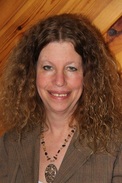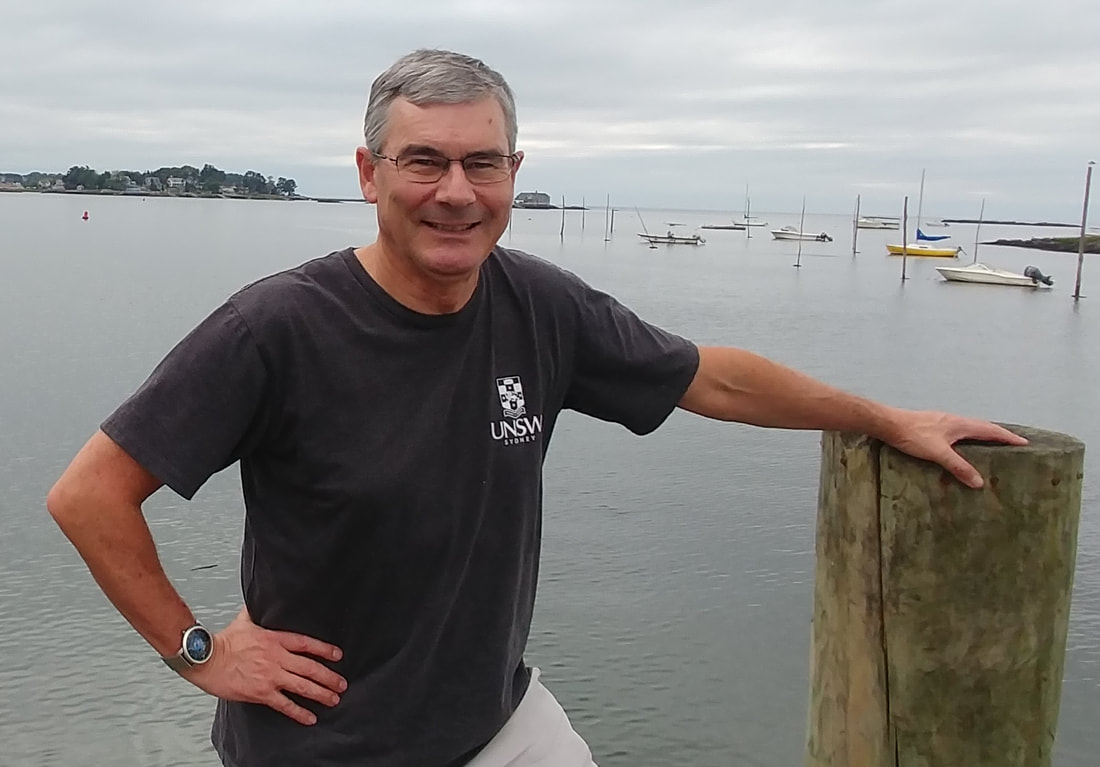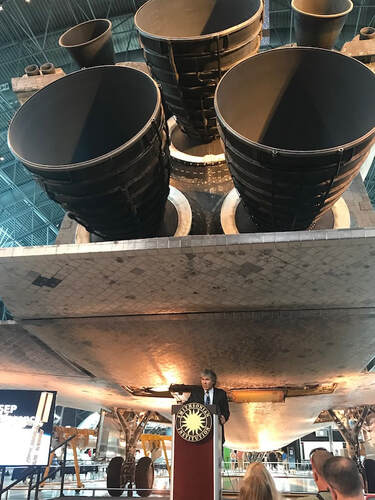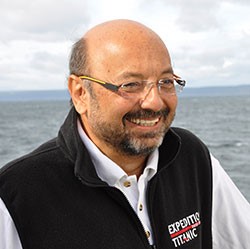Dr. Wilkin will also be presenting a program at the Convention.
Robots, Radars, Satellites, Trawlers, Computers, Calculus and Turtles: The Future of Coastal Ocean Environmental Forecasting Global change is impacting how the coastal ocean serves our needs for food, transportation, energy, and health. Come see some of the exciting new technologies and computer methods that are enhancing our ability to predict this change. Session 141A | Wednesday 1:00-2:00 | Bainbridge
Dr. Gutsch will also be presenting a program at the Convention.
Science Goes to the Movies: Exploring Themes and Techniques for a Variety of Curricula Science fiction movies provide a great “hook” for teaching science and the socio-political matrices in which they are created. We'll explore themes as well as the science and art behind Hollywood special effects. Session 123 | Wednesday 10:00-11:30 | in Carnahan Dr. Jeff Goldstein Director for the National Center for Earth and Space Science Education Human Exploration: It’s Not a Book of Knowledge...It's a Journey Every parent remembers that magical time when our children first began to speak, that moment marking the beginning of an unending stream of questions. In our children we can see our humanity—our innate curiosity—and recognize the obvious…that we are born to explore! Science and more generally STEM, in all its seeming complexity, is nothing but a means to organize curiosity. A way to empower one’s self to ask the gift of a question, and to hone the art that allows navigation through the noise of the universe around us in quest of an answer. It is an emotional, joyful, and wondrous journey that hopefully allows the traveler to pull back the veil of nature just a little, see how she operates, and celebrate the accomplishment. STEM education is no different. It is the means by which we immerse our children in the act of journey by letting them do science, and acknowledging it is their journey. As teachers, our sweet reward is seeing the joys of learning wash over them. And as teachers, we are charged with nothing less than patiently and gently launching the explorations of an entire generation. What you don’t know is a gift…because you can ask a question and start a journey. Dr. Goldstein’s website: http://doctorjeff.org/bio/ Jeff Goldstein hosting the SSEP Conference at the Smithsonian’s National Air and Space Museum July 1-2, 2019. He is standing under Space Shuttle Discovery, which placed the Hubble Space Telescope in Low Earth Orbit in 1990, and conducted two servicing missions to the telescope in 1997 and 1999. Dr. Goldstein is also a certified Zumba instructor. During this time of social distancing he is offering live streaming Zumba classes. Click on this link http://doctorjeff.org/zumba-cardio-dance/zumba-classes-live-streamed/ for a lively dance class on Monday, Wednesday and Friday evenings. Class times are on the website. Email him to get on his email list.
Educational Neuroscience for the 21st Century
The human brain consists of 100 billion neurons (or nerve cells) that give rise to 100 trillion connections. Brain scientists like myself have begun to understand how specialized networks of neurons give rise to cognitive functions such as attention, language, memory and learning. We have also started to understand how the brain forms networks during development that are specific to human cognition and relevant for the school setting, e.g. networks for reading and math. In my talk, I will give examples how neuroscientific knowledge can inform educational interventions and serve our students to become more efficient learners. Sabine Kastner is a Professor of Neuroscience and Psychology in the Princeton Neuroscience Institute and Department of Psychology and serves as the Scientific Director of Princeton’s neuroimaging facility. Kastner joined the faculty at Princeton University in 2000 after earning MD and PhD degrees and receiving postdoctoral training at the Max-Planck-Institute for Biophysical Chemistry andthe National Institute of Mental Health. Kastner studies the neural basis of visual perception, attention, and awareness in the healthy, adult primate brain as well as in patients with brain lesions and during development. Kastner serves on several advisory and editorial boards and is the Editor-in-Chief of Progress in Neurobiology. Kastner is passionate about public outreach such as fostering the career of young women in science, promoting neuroscience in schools and public education (as chief editor of Frontiers for Young Minds – Understanding neuroscience) and exploring the intersection of visual neuroscience and art. In her spare time, Sabine enjoys spending time with her two children and playing drums and bass guitar. *Convention attendance is not required to attend the banquet. To purchase banquet tickets: (1) Register as a professional. (2) Fill out personal information. (3) Register as "Not Attending." (4) Enter the number of banquet tickets. (5) Pay to complete your purchase. Mireya Mayor, Sponsored by National Geographic Learning - NJSC 2018 Banquet Speaker - Tuesday 10/239/10/2018
How does a city girl and former NFL cheerleader who'd never been camping and whose family thought becoming a Girl Scout was too dangerous find herself sleeping in a rain forest hammock amid poisonous snakes, being charged by gorillas, chased by elephants, pawed by leopards, scaling rocky cliffs, and diving with great white sharks? It all started when Mireya Mayor's college anthropology class began studying primates. "It's true that I was a cheerleader who had grown up taking ballet and piano lessons," Mayor says. "But I was seized by the fact that some of these incredible animals on the verge of extinction had never been studied, and that in some cases, not even a mere photograph existed to show their existence. The more questions I asked the more it became clear to me that much about our natural world still remained a mystery."
Mayor has since dedicated her life to solving that mystery, studying rare primates in the wild throughout the world and working closely with local populations. Today, Mayor is a Fulbright scholar and National Science Foundation Fellow, dividing her time between research in Madagascar, appearing as a correspondent on the National Geographic Ultimate Explorer television series, and completing a Ph.D. in anthropology. Mayor's discovery of a new species of mouse lemur in Madagascar put her own work in the spotlight. Documenting her find in hopes of obtaining full protection for its habitat required arduous fieldwork during the monsoon season. Based on her hard-won documentation, Mayor convinced Madagascar's president and prime minister to declare the new mouse lemur species' habitat a national park. The president has since committed to triple the number of protected areas in the nation and established a $50 million conservation trust fund. Convention attendance is not required to attend the banquet. To purchase banquet tickets: (1) Register as a professional. (2) Fill out personal information. (3) Register as "Not Attending." (4) Enter the number of banquet tickets. (5) Pay to complete your purchase. On Assignment: Notes from the Front Lines of Amazonian Conservation and Implications on 21st Century Learning
The NJSC Annual Banquet will feature Andrés Ruzo, a geothermal scientist and National Geographic Young Explorer known for his science outreach work and exploration of the "Boiling River of the Amazon."
 Dr. Lewis is the author of the true story “The Forever Fix: Gene Therapy and the Boy Who Saved It” (St. Martin’s Press), the college textbook “Human Genetics: Concepts and Applications” (McGraw-Hill Education) Putting a Face on Genetics Students can “meet” rare disease families online and then educate the public about the families’ experiences. The 7,000+ rare diseases affect more than 30 million people! 9-12 Biology, Life Science Lecture |
About NJSCThe New Jersey Science Convention is co-sponsored by the NJ Science Teachers Association and the NJ Science Education Leadership Association. 2024 SponsorsArchives
June 2024
Categories
All
|










 RSS Feed
RSS Feed